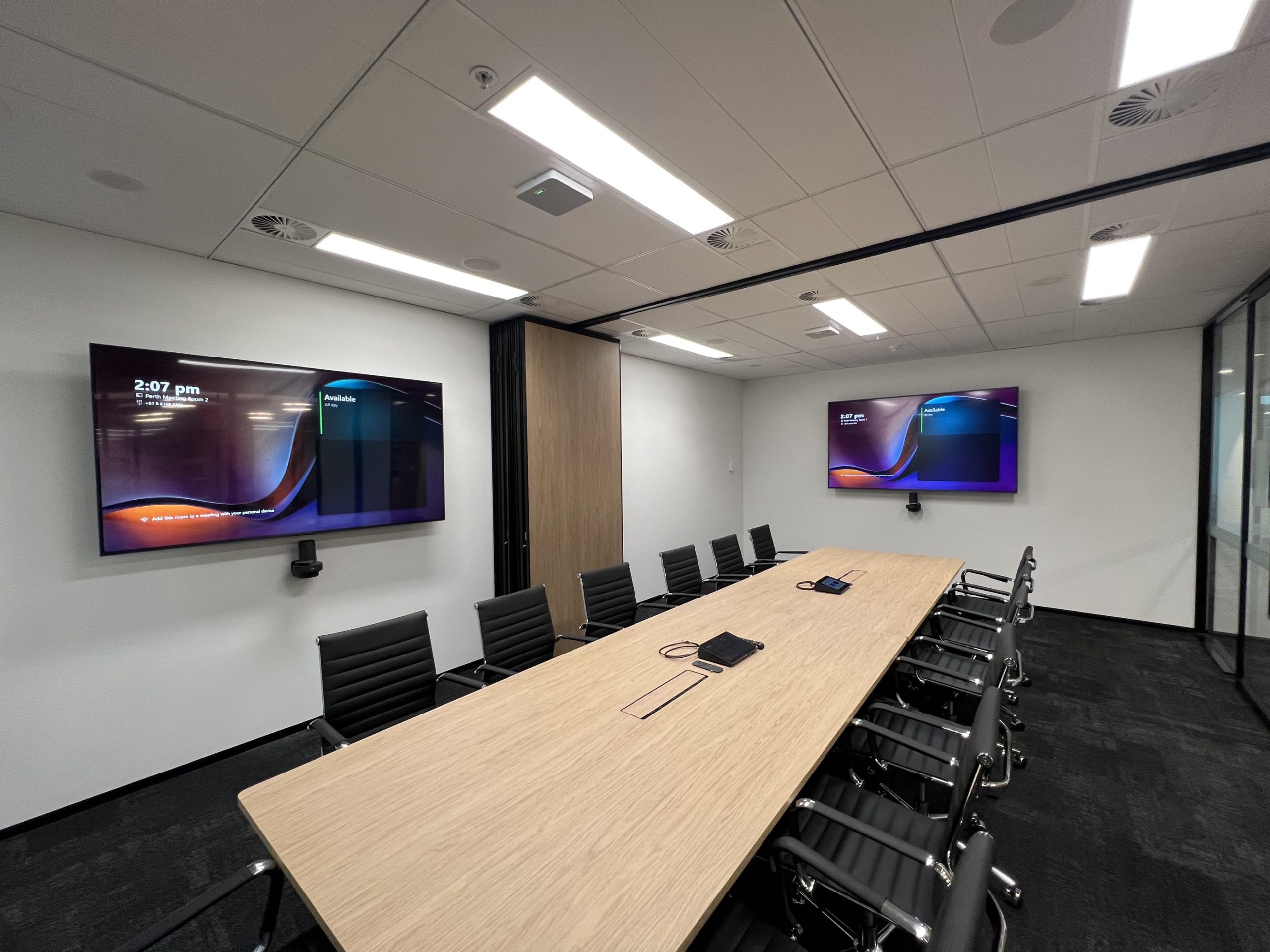Creating an effective meeting room layout that incorporates audiovisual elements is crucial for enhancing communication and collaboration in today’s corporate environment. Here’s a comprehensive guide to help you design an efficient and engaging meeting space.
1. Understand the Space
Before diving into the specifics of audiovisual equipment, it’s important to understand the space you’re working with. Consider the size of the room, natural light sources, and the typical number of participants. A small room intended for quick huddles will have different requirements than a large conference area.
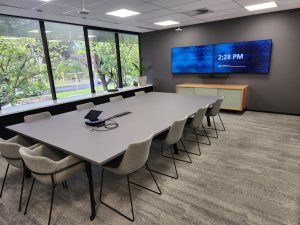
2. Choose the Right Display Technology
- Size Matters: Ensure your screen is visible to all participants. A general rule is that the screen should be half the distance of the furthest seat.
- Type of Display: LED screens are popular for their clarity and visibility, while projectors might be more suitable for larger rooms.
- Positioning: Place the screen at eye level to avoid neck strain and ensure a comfortable viewing angle.
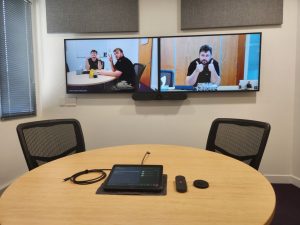
3. Invest in Quality Audio Equipment
- Microphones: Consider ceiling-mounted or table microphones for larger rooms. In smaller spaces, a central microphone may suffice.
- Speakers: Ensure even sound distribution. Ceiling speakers can be a good choice for larger rooms.
- Acoustics: Pay attention to the room’s acoustics. Carpeting and acoustic panels can reduce echo and improve sound quality.
Take your meetings, boardrooms, classrooms, and auditoriums to the next level with scalable and premium audio. Find out more here
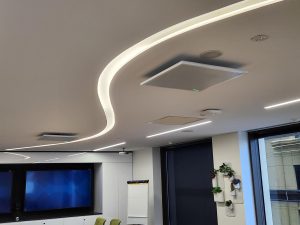
4. Effective Lighting is Key
- Natural Light: Utilize natural light but be mindful of glare on screens.
- Artificial Lighting: Use adjustable and dimmable lights to accommodate different needs. Avoid placing lights directly above screens to reduce glare.
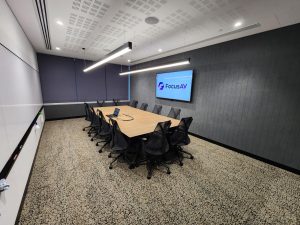
5. Integrate Video Conferencing Solutions
- Camera Placement: Place the camera at eye level to simulate a face-to-face conversation. Ensure that everyone in the room can be seen by the camera.
- Software Compatibility: Ensure your system is compatible with various video conferencing platforms.

6. User-Friendly Controls
- Centralized Control System: A touch panel that controls screens, audio, lights, and other equipment can simplify operations.
- Training: Provide basic training to employees on how to use the AV equipment efficiently.
Read more about our pick for user friendly controls here.
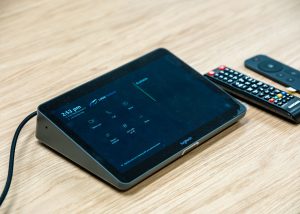
7. Furniture and Layout
- Ergonomics: Choose comfortable and adjustable furniture.
- Layout: Arrange seating so everyone has a clear view of the screen and can hear audio clearly. Consider flexible furniture arrangements for different meeting types.
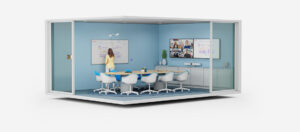
8. Plan for Connectivity
- Wi-Fi Strength: Ensure strong and reliable Wi-Fi, especially if cloud-based tools are used.
- Power Outlets: Provide accessible charging stations and power outlets for devices.

9. Test and Iterate
Regularly test your AV setup to identify and address any issues. Be open to feedback from users and make adjustments as needed.

10. Future-Proofing
Stay updated with the latest AV technology trends. Plan your layout and infrastructure in a way that allows for easy upgrades and changes.
In conclusion, a well-designed meeting room that integrates efficient audiovisual elements can significantly enhance the meeting experience. It’s not just about installing high-tech equipment; it’s about creating a harmonious and functional environment that fosters effective communication and collaboration.
 1300 757 818
1300 757 818 








